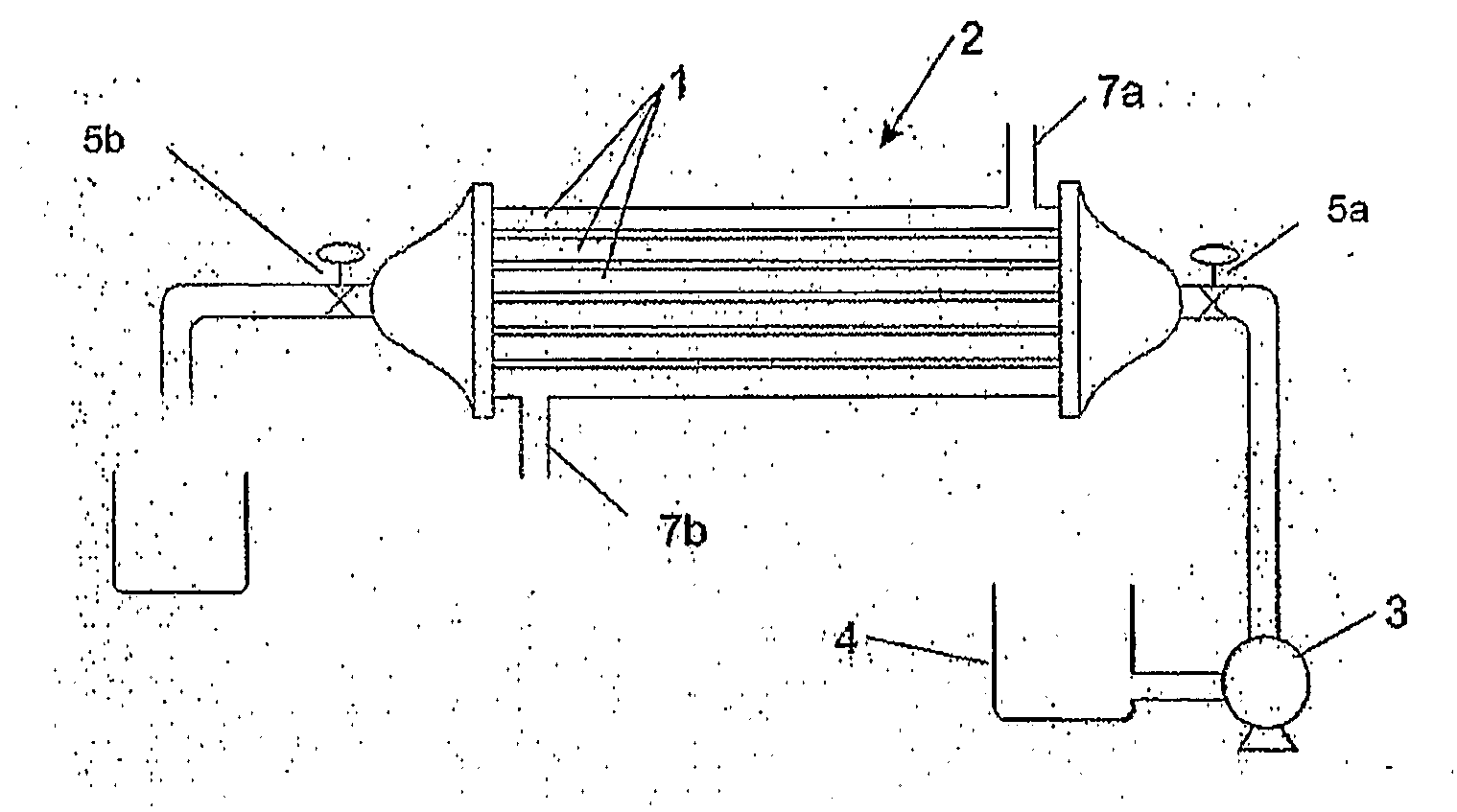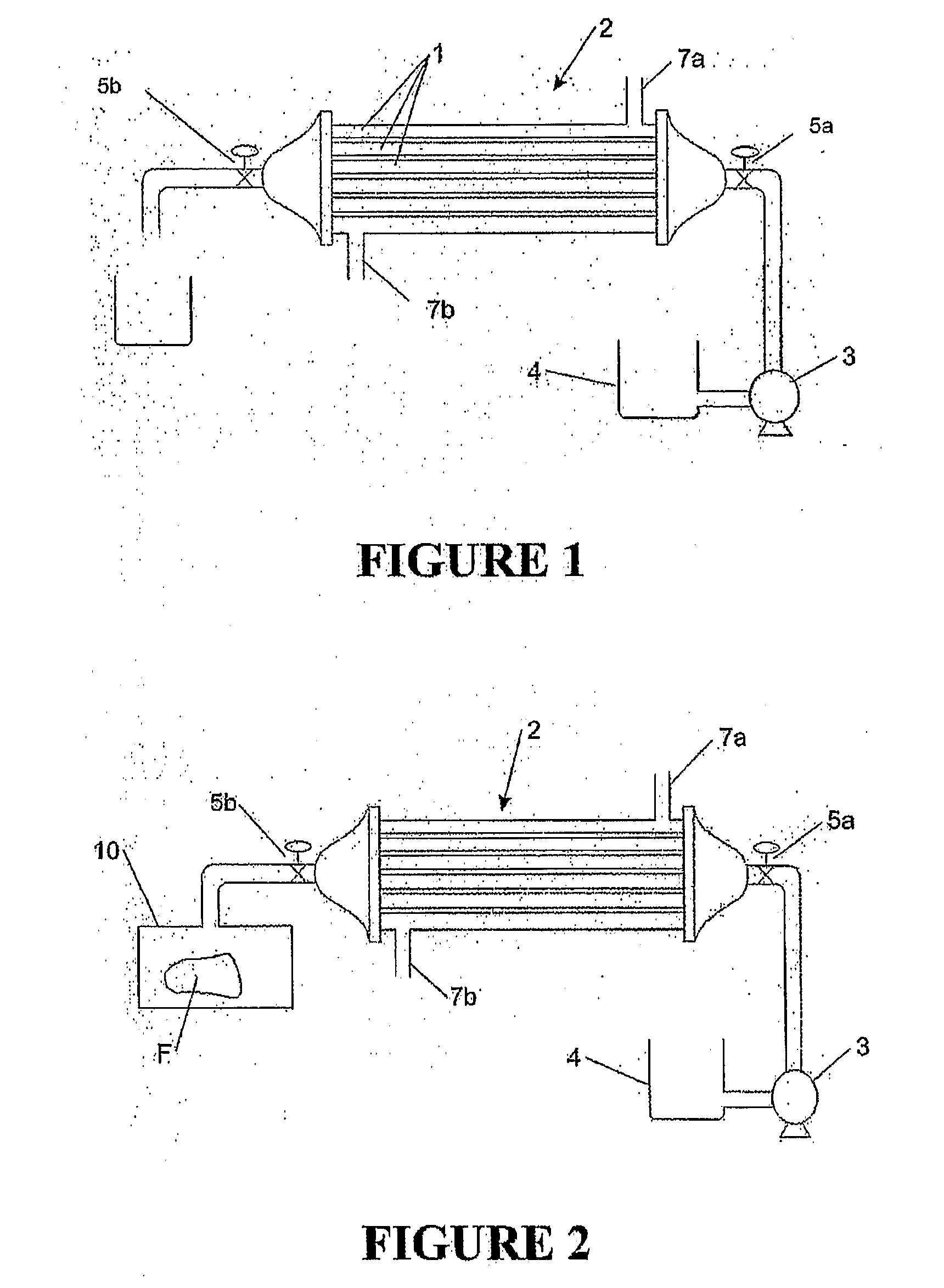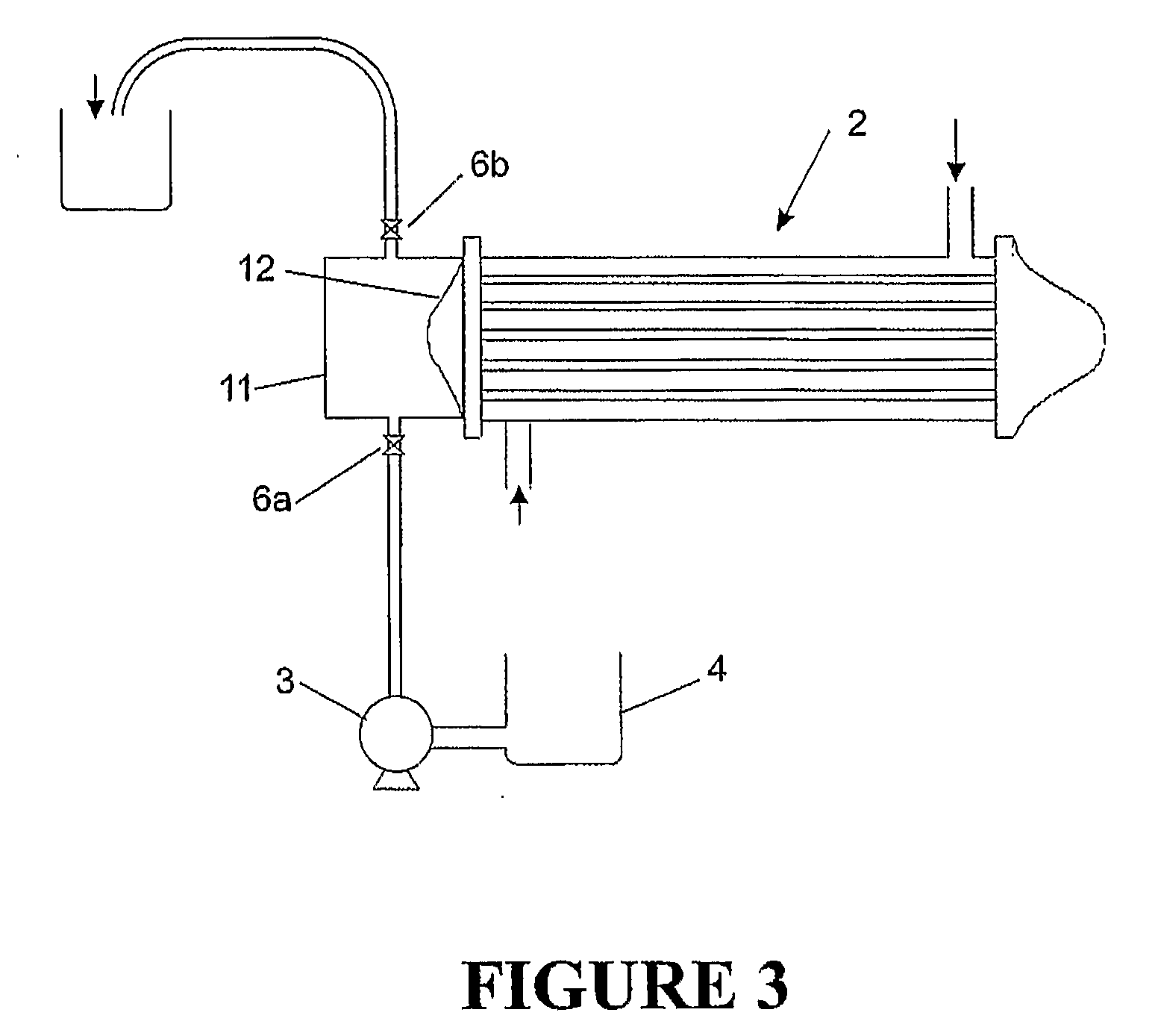Pressure Assisted Thermal Sterilisation or Pasteurisation Method and Apparatus
a technology of thermal sterilisation or pasteurisation and pressure assisted, which is applied in the direction of stationary tubular conduit assemblies, food preservation, food science, etc., can solve the problems of high cost of complete sterilization application by hpp, and achieve the effect of shortening the treatment time and maximising the thermal expansion of the expansion medium and pressur
- Summary
- Abstract
- Description
- Claims
- Application Information
AI Technical Summary
Benefits of technology
Problems solved by technology
Method used
Image
Examples
example 1
[0064]FIGS. 4 and 5 show the pressure increase achieved when different liquids were heated in an experimental vessel up to a temperature of 95° C. This vessel is illustrated in FIG. 11. It has a central pressure vessel 40 contained within a water bath 41 having a lid 42 with a key hole. The upper and lower section of the vessel are welded (with a weld 43) to provide an enclosure with very thick wall. At the top hole a pressure transducer 45 was connected to measure the pressure in the unit, while a plug 44 was used to plug the bottom opening used to drain the treated liquid.
[0065]The liquids were contained in a pressure vessel which was in turn heated in a water bath. Glycerine provided the maximum pressure. The main criteria for selecting fluids to generate pressure are safety, low compressibility and high thermal expansion. FIG. 6 shows the increase in the pressure due to the heating of different charges of a paraffin wax (RT20) in an experimental vessel. The large volume increase...
example 2
[0066]The effectiveness of the method of the invention for deactivating in particular B. stearothermophilus was experimentally tested. It has been noted throughout the literature that B. stearothermophilus (a very heat resistant bacterial spore) cannot be inactivated by high pressure alone. If B. stearothermophilus is completely deactivated the food may be assumed to be completely sterilized.
[0067]There is a particular temperature for bacterial spores to activate into a germinative form. For B. stearothermophilus range of about 49°-55° C. is generally proposed (Lund, 1975). Then moderate pressure will be sufficient to kill the germinated spores. Pressures of only a few hundred atmospheres could still cause germination but would be too low to cause inactivation. Therefore, many researchers have carried out experiments at Ultra High Pressures (beyond 100 MPa) combined with high temperatures. All such experiments primarily utilised external pressure, unlike in this invention in which t...
example 3
[0069]Experimental work was carried out with a test rig as shown in FIGS. 11 and 12. The test rig comprised a part 15 simulating a single tube of a tube heat exchanger of the general type shown in FIG. 1, comprising an inner tube 16 for containing during processing the product to be pasteurised or sterilised, and an outer shell or jacket 17 through which the heating medium was circulated to heat the product within the inner tube 16. The heating medium was circulated within the outer jacket 17 via inlet and outlet ports 18. The product was pumped into the heat exchanger tube 16 via pump 19, through hand controlled inlet and outlet valves 20 and 21.
[0070]Liquid was pumped into the inner tube 16 with the valves 20 and 21 open, and then the valves 20 and 21 were closed, to contain the liquid within the confined volume of tube 16. Hot water as a heating medium was then circulated within the outer shell 17 via ports 18 to subject the liquid within the confined valve of the inner tube 16 t...
PUM
| Property | Measurement | Unit |
|---|---|---|
| temperature | aaaaa | aaaaa |
| temperature | aaaaa | aaaaa |
| pressure | aaaaa | aaaaa |
Abstract
Description
Claims
Application Information
 Login to View More
Login to View More - R&D
- Intellectual Property
- Life Sciences
- Materials
- Tech Scout
- Unparalleled Data Quality
- Higher Quality Content
- 60% Fewer Hallucinations
Browse by: Latest US Patents, China's latest patents, Technical Efficacy Thesaurus, Application Domain, Technology Topic, Popular Technical Reports.
© 2025 PatSnap. All rights reserved.Legal|Privacy policy|Modern Slavery Act Transparency Statement|Sitemap|About US| Contact US: help@patsnap.com



